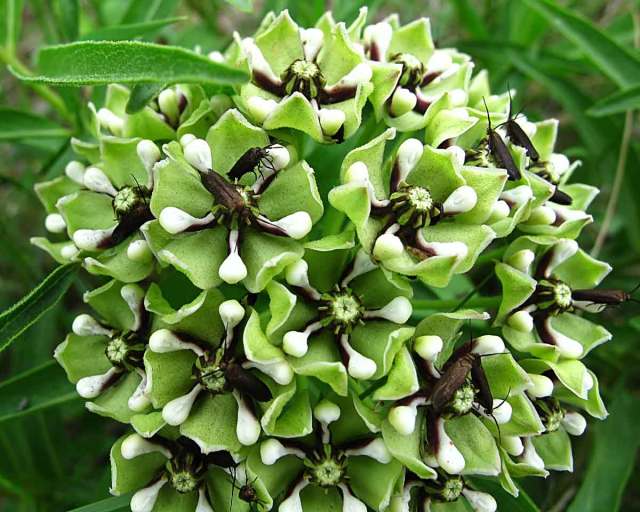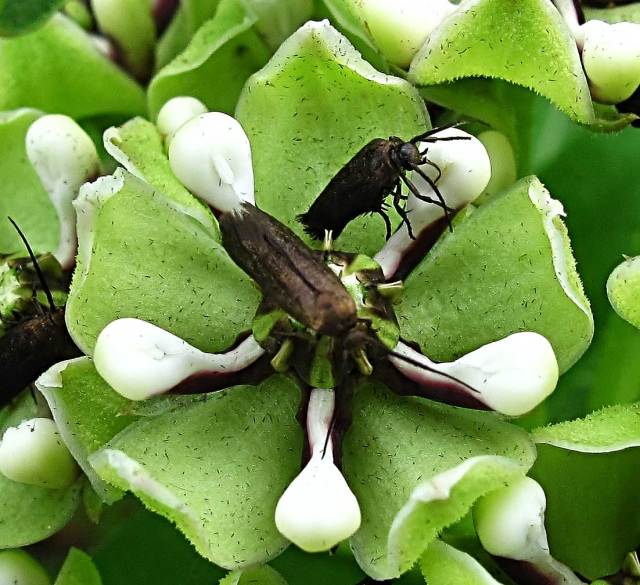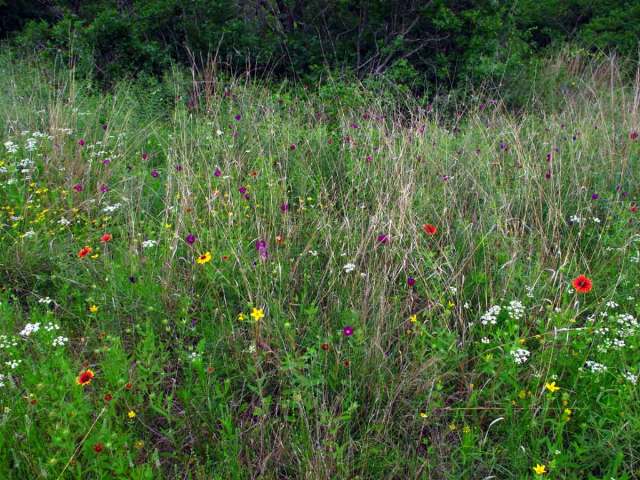Martha and I discovered this micromoth while photographing wildflowers at the Ft. Worth Nature Center & Refuge. There were dozens each on 3-4 flower heads of Asclepias asperula, Green-flowered Milkweed also known as Antelope Horns or Spider Milkweed. At first it looked like the flower heads were shimmering or moving. I don’t know which specific tree they emerged from.

The 5 white stamens with large, ball-like anthers, are colored black on the bottom side near the base and provided a perfect camouflage for these micro moths as they nectared on the milkweed.
If you look closely, you can see a lot of the tiny black/dark brown scales from the fringes of the moths on the flowers. All of the moths looked very fresh or newly emerged from the cocoons.

The scientific name for this moth is Urodus parvula.
It was formerly placed in the Ermine family of Moths, Yponomeutidae.
The Larvae feed on a variety of trees and shrubs such as bumelia, hibiscus, and oaks and the cocoon for the caterpillar is a net-like chamber attached to the host plant by a filament. All of these plants are in the Nature Center.
One of the more common Larval food Sources is a tree and its name link:
Gum Bumelia, Sideroxylon lanuginosum formerly Bumelia lanuginosa
which is commonly known as Chittamwood, Woolybucket Bumelia, Gum Elastic, Wooly Buckthorn, Gum Woolybucket, Wooly Bumelia, False Buckthorn, Shittamwood, Ironwood, or Coma. That’s a lot of common names.
It is a narrow-crowned, spiny, deciduous tree that typically grows 20 to 45′ tall. Native to the southeastern U.S. and northern Mexico north to Missouri. It occurs in dry or open rocky woods and glades. From Florida to Texas, it is also seen in moister soils along streams and swamps. Oblong-obovate leaves (to 3″ long) are soft-hairy underneath and persist late into fall before turning an unexceptional yellow-green. Clusters of tiny white flowers appear in the leaf axils in early summer that give way to small, globular, shiny, slender-stalked fruits (to 1/2″ long) which mature black in fall. Branches have sharp thorns reminiscent of osage-orange (Maclura). Cut wood exudes a milky sap. Bumelia is in the same family (Sapote) as the tropical sapodilla tree (Manilkara zapota) which is the source of the chicle used in chewing gum. Children of early pioneers sometimes chewed the sap that oozed from cracks and wounds in the bark. Lanuginosum means “having soft, downy hairs”, in reference to the hair on the leaf undersides and twigs of this species.
One of the Moth food sources pictured here is Milkweed:
Asclepias asperula (Dcne.) Woods.
Sometimes known as:
Spider milkweed, Antelope horns, Green-flowered milkweed, Spider antelope-horns
Asclepiadaceae (Milkweed Family)
USDA Symbol: asas
USDA Native Status: Native to U.S.
Spider antetope-horns is a clump-forming, 1-2 ft. perennial with an upright or sprawling habit. Stems are densely covered with minute hairs. The leaves are 4–8 inches long, narrow, and irregularly grouped. The long, thick, narrow leaves are often folded lengthwise. As the green seed pods grow in length and begin to curve, they resemble antelope horns. Its pale, greenish-yellow flowers, tinged maroon, are crowded in round, terminal clusters 3–4 inches across at the end of the flower stem and are intricately arranged. Inside the partially divided petals is a crown, out of which extend 5 white stamens with large, ball-like anthers, all symmetrically arranged.
This Milkweeds is also a primary food source for Monarch caterpillars.
Wildflowers,
Ft.Worth Nature Center & Refuge ,
May 2, 2009

3500+ acres of varied habitat,
over 20 miles of varied terrain trails,
prairie barrens, old forests, grasslands, marshes, wetlands,
and including the West Fork of the Trinity River cutting through the park.
A Naturalist’s Paradise
Troy

I put this together in a hurry.
If you see any corrections that need to be made, let me know.
This is of course the first post on ‘I C U Nature’.
Love the site, Troy! Great images.
Love it! Keep up the great work Troy.
Troy, you constantly amaze me with your knowledge and your love of nature. This is an outstanding post. Are you going to link this blog to your other blog and vice versa?
Last one is the best among these amazing collections..nice post..
Jack
You and I are going to be good friends. I love plants. Am really enjoying your flowers.